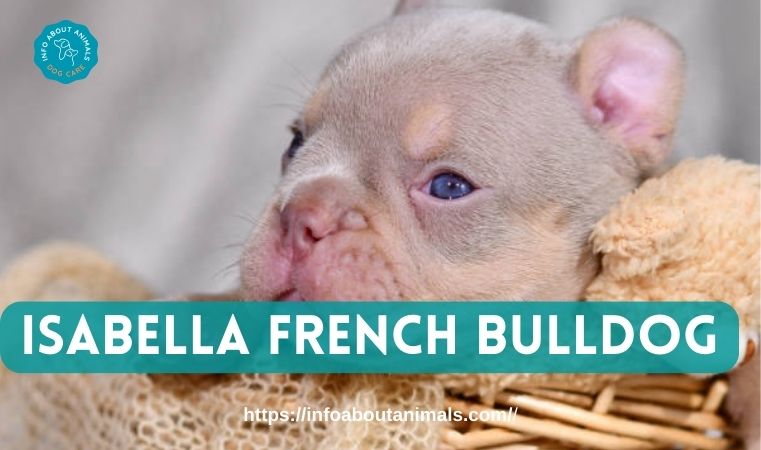The French Bulldog Teacup is one of the most sought-after companion pets of the past several years, winning hearts with its small size and endearing personality. The toy-sized versions of the standard French Bulldog typically weigh under 15 pounds, making it the ideal pet for those with apartment living and easy transport. But with their miniature size comes serious factors the future owner should know about before bringing one home.
This comprehensive handbook will explore everything about the ownership of a Teacup French Bulldog with great precision. We will explore their dubious breeding history, examine their atypical body shape, and address the specialized care these delicate animals require. You will witness their charming but sometimes stubborn nature, the health complications that afflict them, and the expense of appropriate care.
It is based on veterinary research, interviews with breeders, and owner reports to present the most realistic picture of what life with a Teacup French Bulldog is like. If you’re simply curious about these little companions, or if you’re seriously considering bringing one into your home, this guide will provide the information you need to make informed decisions about this unusual variation of the breed.
What Is a Teacup French Bulldog?
A French Bulldog Teacup is a specifically miniaturized variety of the French Bulldog, typically weighing 5-14 pounds, compared with the norm of 16-28 pound. These extremely small animals are produced by selective breeding techniques designed to produce the smallest possible animals, typically by breeding runts with runts for several generations, or by introducing dwarfism genes.
Teacup French Bulldogs breeding is widely debated among veterinary experts and breeders. Many experts say that creating bulldogs this size only exacerbates the breed’s natural health complications and introduces new ones. The American Kennel Club and most large breed organizations don’t recognize them as a special classification but only as miniature French Bulldogs, not a variety.
Potential owners should be aware that “teacup” is really a marketing term and not a formal classification. The compact size comes with a cost – these animals tend to be prone to brittle bones, severe breathing issues, and other health issues that require expensive veterinary care. Good breeders will be up front with these risks and provide full health clearances on the parents before breeding.
Origin and History of the Teacup French Bulldog
The history of the French Bulldog teacup begins with the history of the French Bulldog. Bred originally as toy bulldogs in 19th century England, the French Bulldogs gained favor with the lace workers of Nottingham, who brought the breed with them to France during the Industrial Revolution. The French refined the breed into the affectionate, bat-eared companion we know today.
The demand for even tinier French Bulldogs emerged during the early 2000s with the onset of urbanization and the demand for ultra-tiny pets. The breeders began breeding the smallest French Bulldogs available, or breeding Frenchies with toy breeds like the Chihuahua, to achieve the teacup size. The practice was profitable since the small canines could command high prices, at times up to $10,000 or even higher for a puppy.
Vet organizations have had serious doubts about the morality of breeding French Bulldogs the size of teacups. The British Veterinary Association has warned that the animals are being bred for the purpose of looks and not for health, and the animals suffer throughout their whole lifetime. Some developed nations are considering legislation on the banning of breeding of extreme miniature breeds due to welfare concerns.
Teacup French Bulldog Size and Appearance
Teacup French Bulldogs share all of the typical physical attributes of regular Frenchies – just on a much smaller scale. They tend to be 10-12 inches at the shoulder and 5-14 pounds full-grown. Their little, muscular bodies still retain the breed’s typical “bat ears,” short noses, and wrinkled face, although these become even more exaggerated on the teacup variety.

The short, smooth, and fine coat comes in all the typical French Bulldog colors like brindle, fawn, white, and pied patterns. Some breeders also offer unusual color shades of lilac or blue at a premium, though these normally carry the health consequences of the dilute genes behind these colors. The skin also develops characteristic wrinkles around the face and shoulders, which must be washed daily to prevent infection.
One of the disturbing things about the appearance of the Teacup French Bulldog is the frequency with which dwarfism features like oversized heads, bulging eyes, and short limbs appear. These, even if sometimes considered “cute” by the buyers, can be indications of serious health issues. Quality breeders aim to breed teacups that are simply small copies of healthy Frenchies, not dogs with extreme dwarfism.
Temperament and personality of the Teacup French Bulldogs
Small as they may be, the French Bulldogs of the Teacup variety have large personalities packed into little bodies. They’re playful, affectionate, and become instant buddies with their people. They’re mostly stubborn like most Frenchies, with a clownlike sense of humor, making them endlessly entertaining. Their medium energy levels make them content with short play sessions, then long snoozes.
These small canines are surprisingly courageous and will stand their ground with much larger animals if socialized properly. Proper early socialization and ongoing socialization is necessary to prevent small dog syndrome or territorial behavior. They will be friendly with cautious, respectful children and other pets if introduced properly, but their delicate nature needs to be treated with care with large animals and little ones.
Teacup Frenchies are very people-oriented and will become anxious if left alone for extended periods of time. They prefer being part of the family with someone home for the majority of the day. They’re intelligent and quick learners, but stubbornness will require patience when training. They work best with positive reinforcement.
Health Problems with Teacup French Bulldogs
Teacup French Bulldogs see amplified versions of the health issues of regular French Bulldogs, with the added consideration of their extreme miniaturization. Here is a comprehensive breakdown of their most serious health risks.
1. Severe Hip Dysplasia
The common deformation is particularly debilitating for teacup breeds. Their large heads and short legs subject their immature hip joints to stress. Most of these will show symptoms as early as 12-18 months, such as the typical “bunny hop” walk and joint popping. Without surgery, most will be arthritic by the age of three and can become mobility-impaired. Surgical repairs can be well over $5,000, making pet insurance critical for owners.
2. Cherry Eye Complications
While cherry eye is common on most bulldog breeds, teacups see the most serious cases. Their weakened orbital ligaments no longer can position tear glands properly, leading to increased gland prolapse. Unlike regular Frenchies, where one eye may be involved, teacups tend to see bilateral cherry eye concurrently. Surgical replacement is 40% likely to be unsuccessful on teacups, and this can be repeated. If untreated, the resulting dry eye can lead to corneal ulcers in a few weeks.
3. Increased Cancer Risks
Teacups also exhibit typical Frenchies’ susceptibility to cancer but with earlier onset and virulence. Mast cell tumors present at 2-3 years of age compared with 5-7 years for ordinary Frenchies. Of most concern is hemangiosarcoma, five times as prevalent. Their size is such that it is difficult to treat – radiation is typically too harsh, and the doses of chemotherapy must be measured carefully to avoid toxicity.
4. Gastrointestinal frag
Compression of the digestive tract in the teacups leads to chronic illness. Their torsion-susceptible stomachs make episodes of bloating life-threatening after several hours. Most of these acquire “megacolon” by middle age, with the colon losing its mobility. Food sensitivity is the rule, with hydrolyzed protein diets required for most. Pancreatitis occurs in nearly 30% of teacups by age four, most often from even slight dietary changes.
5. Respiratory Emergency
Teacups carry brachycephalic syndrome to the extreme. Their long, thin soft palates and pinched nostrils result in chronic oxygen deprivation. Some teacups even require staphylectomy surgery (removal of part of the soft palate) by six months of age just to breathe. Heat stroke potential is extremely high – even 75°F can lead to respiratory collapse. You will want to have cooling vests available and severely limit outdoor play when the weather is warm.
6. Dental Disasters
Crowded teeth on constricted jaws provide the perfect breeding ground for aggressive periodontal disease. Most teacups lose 30-50% of their teeth by age five even with the most vigilant care. Root abscesses are common and can spread infection into the jawbone. Quarterly professional cleanings with anesthesia are necessary, but the anesthesia is of high risk due to compromise of the respiratory system.
7. Neurological Vulnerabilities
Selective breeding for size also leads to higher frequency of Chiari-like malformation, with the brain protruding beyond the skull. This causes neck pain, phantom scratching, and, in 20 percent of the cases, syringomyelia (spinal cord fluid-filled cavities). Most teacups require daily pain medication by age three and MRI monitoring for worsening of the disease.
8. Reproductive Problems
Natural birth is practically impossible – the teacup mother’s pelvis is not big enough for puppy heads. C-sections must be performed, with 15-20% mortality for the mothers and the puppies. Most breeders must sign spay/neuter contracts because pregnancy is extremely dangerous for teacup mothers.
9. Liver Shunt Prevalence
Portosystemic shunts are present in about 25% of teacups, and the blood completely bypasses the liver. Stunted growth, seizures, and toxic buildup ensue.
8,000−
8,000–12,000 of the corrective procedure is only 60 percent successful with teacups due to their fragile vasculature.
10. Immune system deficiencies
Teacups with thymic hypoplasia tend to have underdeveloped immune systems. They’re susceptible to otherwise harmless pathogens – kennel cough can become pneumonia, and routine vaccines can be given half-doses several weeks apart. Many of these are on prophylactic antibiotics during high-risk seasons.
Caring for Your Teacup French Bulldog
Caring for a Teacup French Bulldog entails observing their unique needs. From grooming to exercise, here is the method by which you can make your little companion happy and healthy.
1. Preserve Their Facial Folds and Ears
Teacup French Bulldogs have adorable wrinkles, especially on the face, but these wrinkles can trap moisture and bacteria, leading to infection. To prevent this, clean their wrinkles with a warm, damp cloth, ensuring that they dry completely. Irritation is brought about by moisture accumulation, and this is why cleansing is necessary.
2. Bathe and Groom Every Day
Bathing is best done on your Frenchie once, and sometimes twice, a month, for their body to be clean and healthy. You can bathe them yourself at home, or go see a pro groomer. Either one, make sure to wash all of their body parts, from nose to tail, for their cleanliness.
3. Tail Pocket Cleaning Once a Week
Your Teacup Frenchie’s tail pocket can be a breeding ground for bacteria and dirt, so it needs washing at least on a weekly basis. Wash around and into the tail pocket with warm water, a soft washcloth, and some gentle soap. Dry the area thoroughly afterward to prevent infection.
4. Deny Them Access to Deep Water
Just like the regular French Bulldogs, the Teacup Frenchies aren’t natural swimmers. Never leave them unsupervised near pools, lakes, or any other body of water. If you’d like for them to swim, dress them up with a strong dog life vest and make sure to supervise carefully to prevent any accidents.
5. Take Short, Simple Walks
Teacup French Bulldogs don’t need demanding exercise, but regular, short walks will exercise and stimulate them. A walk around the block, or taking them with you on short errands, will give exercise and stimulation. If you’d like some additional training and obedience, take your dog for a training session.

Where Can You Buy a Teacup French Bulldog?
It is difficult to find an ethically bred Teacup French Bulldog, and it is a task that is time-consuming and needs patience. Good breeders health test breeding stock, socialize puppies at home, and give full medical history. They’re honest about the health issues of the breed and usually have waiting lists for their meticulously planned litters.
Adoption is possible, though not common. Some breed rescues will occasionally have a Teacup French Bulldog available, often from owners who were not ready for their high-maintenance needs. The animals may already be developing health problems but can be wonderful companions for the right family.
Potential buyers should be wary of puppy mills and backyard breeders, whose primary focus is on profit, not on welfare. Warning signs include puppies available at all times, unwillingness to show health clearances, and refusal to let buyers on breeding facilities. These breeders will produce puppies with serious, costly health complications.
Cost of a Teacup French Bulldog
The price of a Teacup French Bulldog from a responsible breeder typically ranges from
$3,000-10,000, with the less common colors commanding the highest prices. This is only the initial cost – owners should budget $3,000-5,000 annually for regular veterinary care, great food, and necessary supplies.
Emergency veterinary treatment can easily cost into the thousands. Some pet owners opt for pet insurance plans that cost $50-100 a month, but existing conditions common in teacups aren’t typically covered. Surgical procedures like airway repairs or hip surgery can cost well over $5,000 a procedure.
These prices make the French Bulldogs of the Teacup variety a significant investment. Prospective owners should carefully think about their ability to care for one of these delicate animals long term before bringing one home.
Pros of Owning a Teacup French Bulldog:
Teacup French Bulldogs offer unique advantages, but also some serious challenges. Their compact size is ideal for apartment living and traveling. They’re great companions, friendly and fun, with strong family ties. Their exercise needs are moderate, and thus, they’re ideal for less active owners.
However, their health requirements require careful attention. They’re expensive to purchase and maintain, with the possibility of astronomical vet bills. They’re not ideal for homes with small children or big animals. They require careful attention on a daily basis that can be overwhelming for novice dog owners.
Perhaps most notably, though, is the ethical question of breeding these animals with such severe health complications. Admittedly adorable, the fact that these animals exist is questionable on the basis of animal welfare being secondary to human desires.
Frequently asked questions
Are French Bulldogs suitable family pets?
They can be great pets for calm homes with older, gentle children. Their fragile nature makes them unsuitable for homes with toddlers or rambunctious children.
Teacup French Bulldogs may survive for 10-12 years with excellent care, but the majority die earlier because of health complications.
Do French Bulldogs fly on planes?
Some airlines prohibit brachycephalic breeds from being transported as cargo due to breathing risks, and their small size makes travel possible with the appropriate documentation.
Do French Bulldogs shed?
Yes, French Bulldogs shed moderately throughout the year. Loose hair is maintained with regular brushing.
Are they difficult to house train?
Like all Frenchies, they can be stubborn when it comes to housebreaking. Be consistent and patient.
Conclusion
Teacup French Bulldogs are undeniably adorable but come with a serious commitment. Their health complications necessitate owners with the resources and emotional maturity to cope with potential medical emergencies.
Their small size and cute nature make them appealing pets, but potential owners should reflect long and hard on their ability to provide the kind of attention such delicate animals require.
To the right owner, with sufficient time, resources, and dedication, a Teacup French Bulldog can be a deeply rewarding companion. But anyone considering this breed should thoroughly research breeders, be aware of the full extent of the potential health complications, and be realistic about their capability of providing the dog with what it needs for the rest of its life.
References:
- Frenchiestore. (2020, January 18). Does the miniature French Bulldog really exist? Frenchiestore. https://frenchiestore.com/blogs/frenchie-blog/does-the-miniature-french-bulldog-really-exist?
- American Kennel Club. (n.d.). French bulldog dog breed information. https://www.akc.org/dog-breeds/french-bulldog/
- French Bulldog puppies for sale | Pets4Homes. (n.d.). Pets4Homes. https://www.pets4homes.co.uk/sale/puppies/french-bulldog/
- Grenus, B., DVM. (2023, December 6). 23 French bulldog Health issues pet parents should know about. PetMD. https://www.petmd.com/dog/general-health/french-bulldog-health-issues
- Grenus, B., DVM. (2023b, December 6). 23 French bulldog Health issues pet parents should know about. PetMD. https://www.petmd.com/dog/general-health/french-bulldog-health-issues





